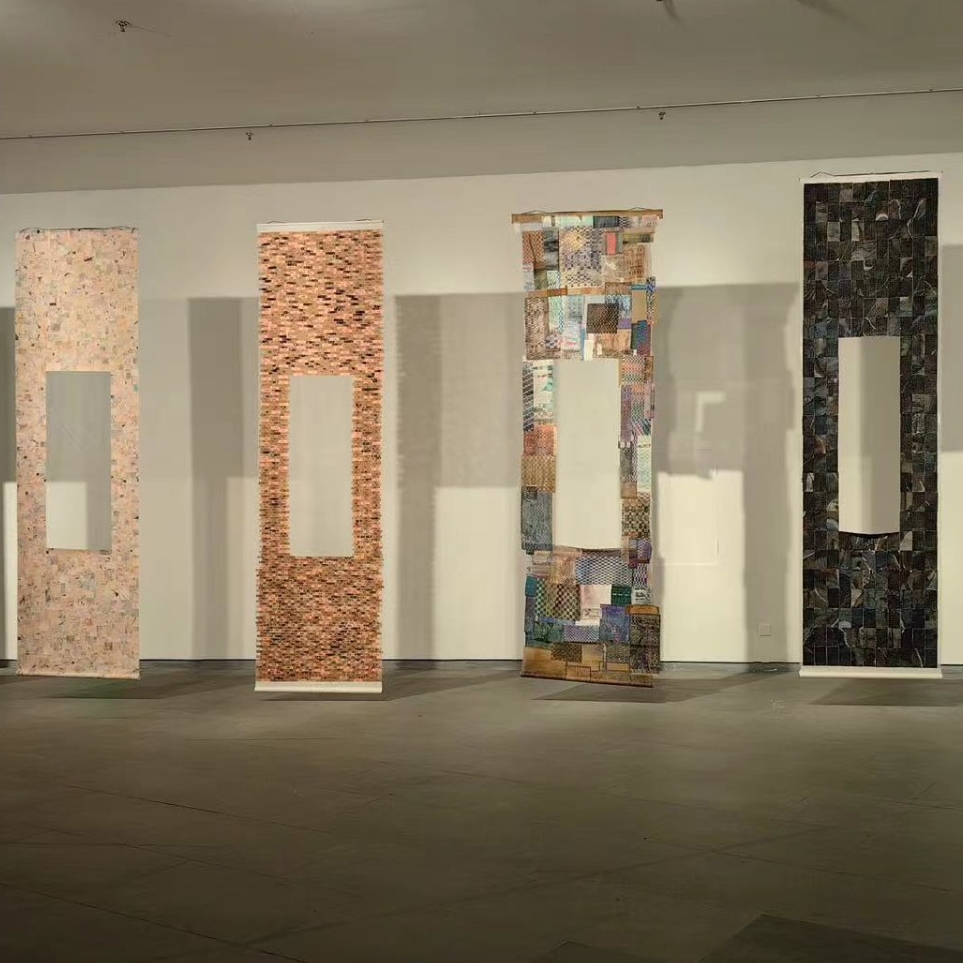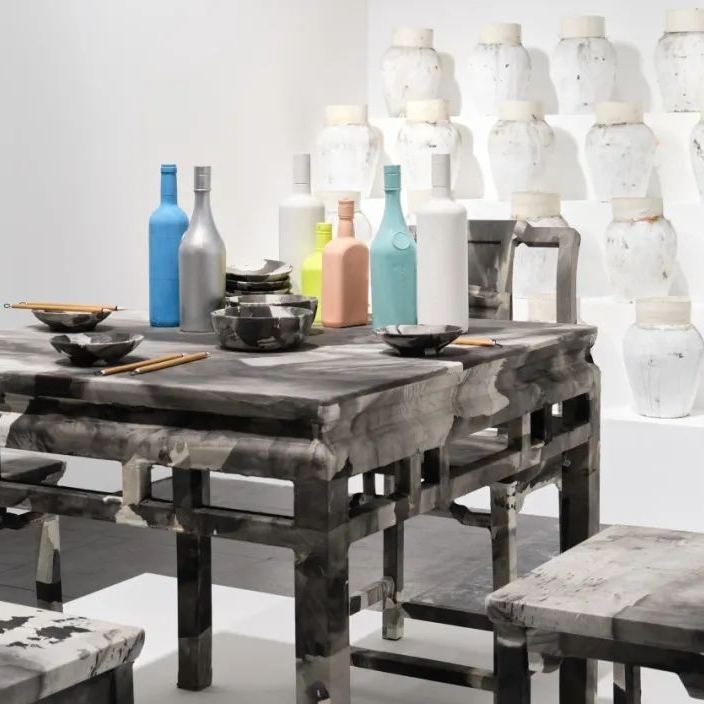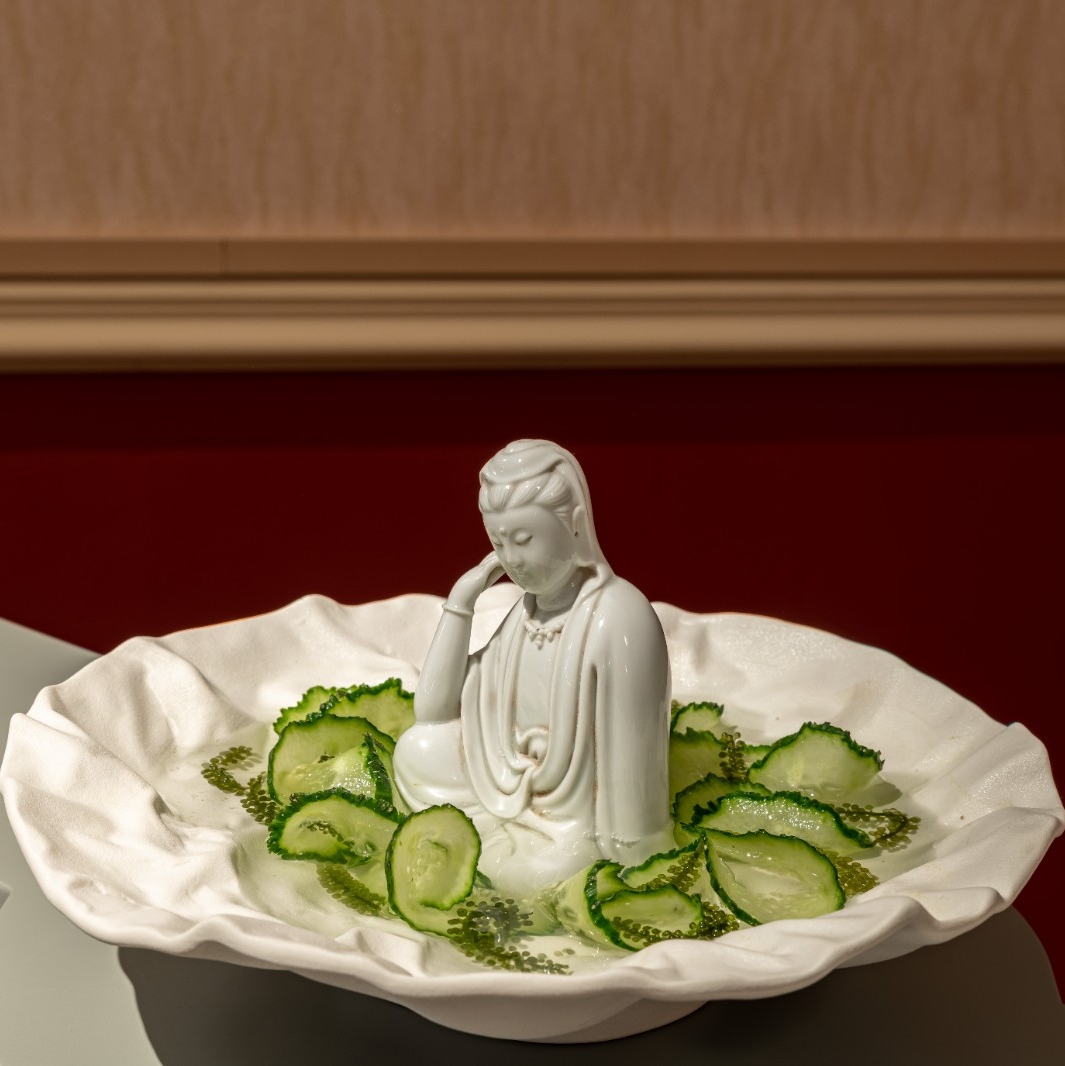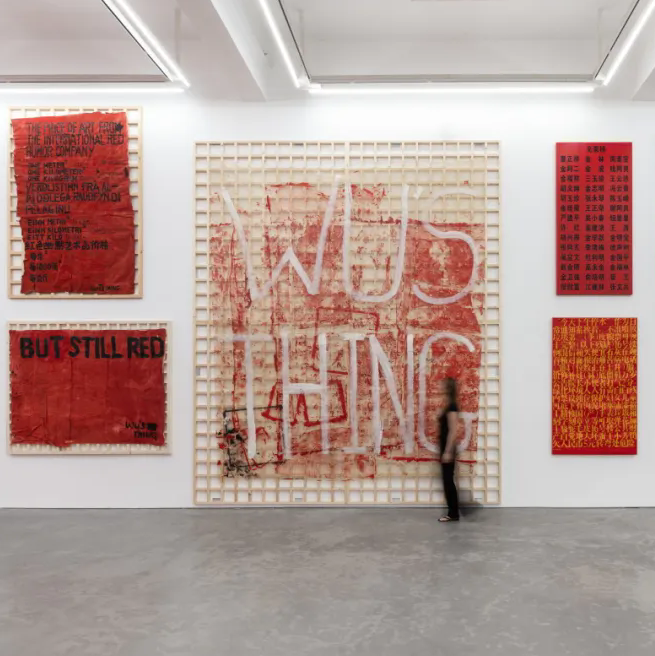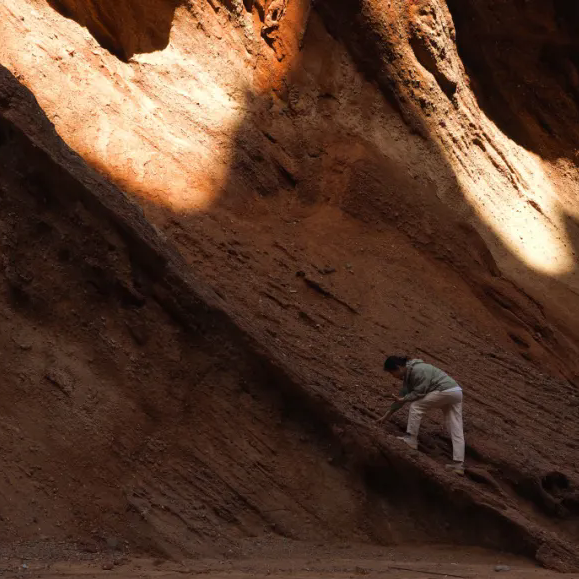
Xiao calls himself a believer in Buddhist tradition.
Xiao Yu never tries to create clichéd or kitsch art. The 46-year-old Xiao, graduate of the Printmaking Department of the Central Academy of Fine Arts in 1989, has instead turned to the unusual and the everyday in search of mediums. Thus, corpses, picture frames, disposable bags, adhesive tape, condoms, bones, wires, stairs, trees and toilets are all used to represent his eccentric concepts.
Xiao shocked Chinese fin de siecle society with his triptych of gruesome surgical art that seemed to come out of the pages of Frankenstein. They included Ruan, an infant head with a rabbit's eyeballs and body and a bird's limbs, Jiu, which stitched duck wings onto rabbits' bodies and Wu which sewed together a pair of live mice. What's more, these unsettling artworks were showcased during the 2001 Venice Biennale – at the entrance.
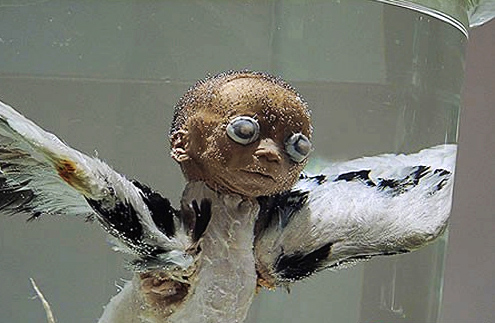
"Ruan" by Xiao Yu
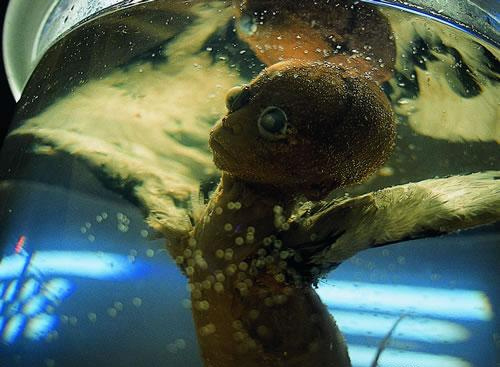
"Ruan" 02 by Xiao Yu
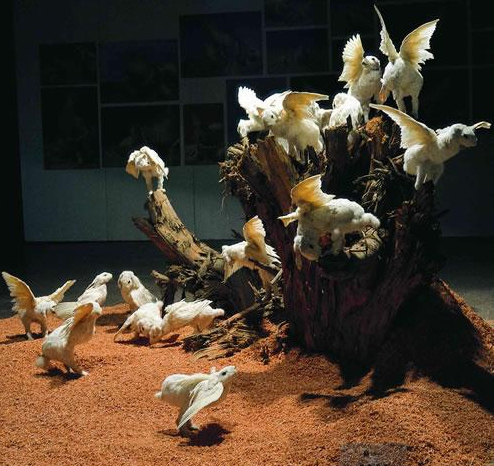
"Jiu" 02 by Xiao Yu
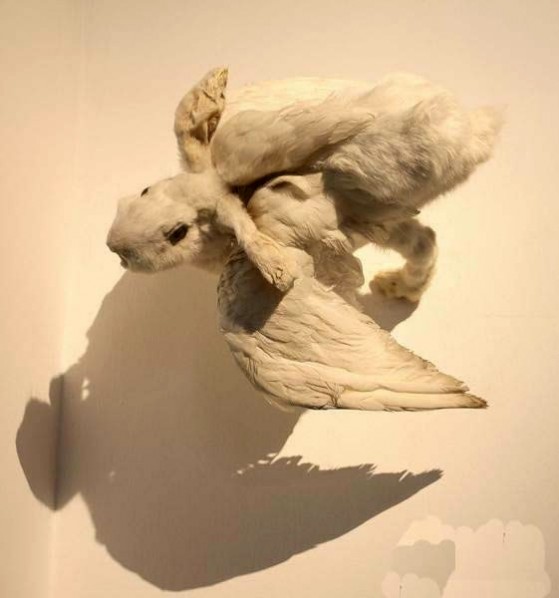
"Jiu"(detail) by Xiao Yu
So is Xiao obsessed with death? "To be honest, I don't think much about death," he replied, louchely blowing smoke rings. "On the contrary, I care about life, especially the equality of every creature."
He mentioned murals from the Dunhuang Mogao Grottoes, Gansu Province, such as the Jataka of King Sivi and Jataka of Prince Sudana, which were completed in the Northern Dynasties (386-581). "The prince in these Buddhist stories either cut his own flesh to save a dove or sacrificed himself to feed the tigers. Both tigers and human beings are predators; they have the right to devour each other. In other words, a death might save a life."
Buddhism forms part of what Xiao terms an ubiquitous, Eastern balancing attitude. "The concepts of tolerance and impartiality brought up by [Buddhism] have greatly influenced people. Compared with Western religions, I dislike their exclusivity, such as the idea of pagans."
With Xiao's latest exhibitions in Beijing till September, 2011, respectively held at the Pin Gallery in 798 Art District and a solo exhibition at the Aye Gallery, Lama Temple, "There's some mutuality in these art spaces, especially with the artworks made from frames," according to Xiao.
At Pin, Xiao displays several oil paintings, along with four unprecedented quasi-sculpture artworks. In the biggest paintings, Definition of Rise and Description of Rise, numerous smaller frames accumulate and shape a pyramid-like object protruding from the wall.
The inspiration comes from Xiao's educational background. "In the past, I think that teachers in art academies taught the students how to produce an 'artistic object,' instead of teaching the technique of painting, or creating artworks," Xiao said. "The audiences also tried to 'appreciate' these artistic objects,' but I've already made a great leap forward. It's an experimental creation away from painting on canvas. The sculptures you see at Pin Gallery were finished about 20 years ago."
In these 20 years, the category of art has expanded until various new forms now exist. "Everybody can discuss art, not to mention the media, the critics, or even the collectors. At the same time, people keep asking about the definition of art nowadays," Xiao observed.
In Xiao's own interpretation, visual art is the incarnation of the abstract notion of 'art.' Thus, "sculptures to me contain not only three dimensions, but four, including time. The frame artworks represent 20 years ago, yet they are still modern for being displayed in a group exhibition."
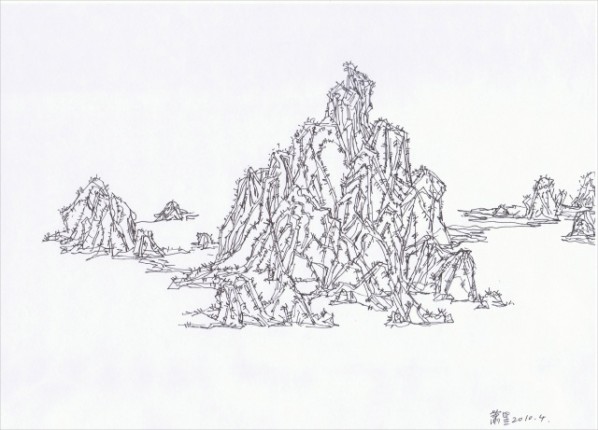
"Scenery" by Xiao Yu
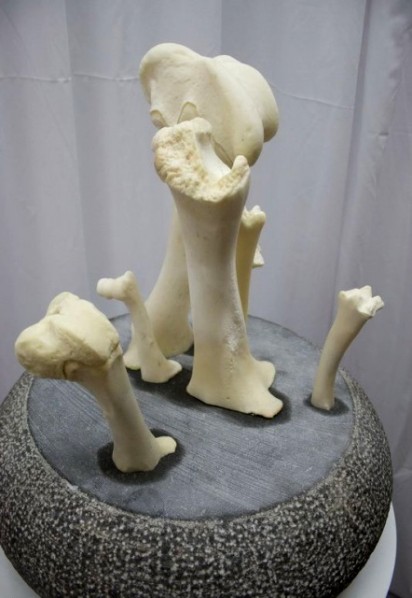
"Scenery" 02 by Xiao Yu
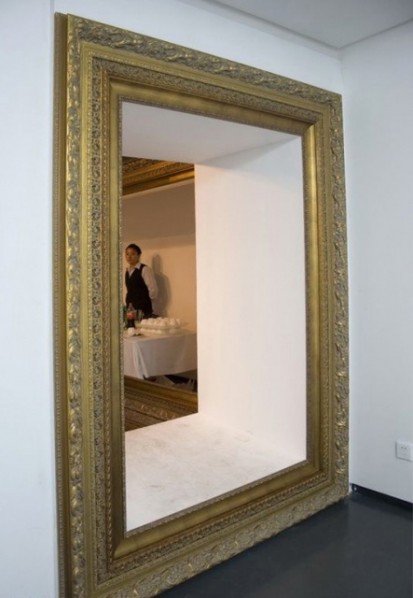
"Scenery" 03 by Xiao Yu
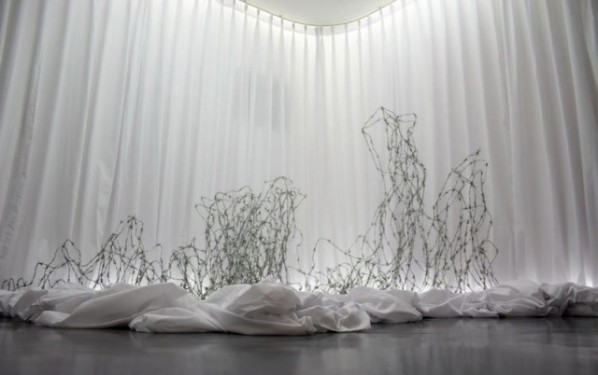
"Scenery" 04 by Xiao Yu
At Aye Gallery, an exhibition entitled Scenery showcases several Xiao artworks, all also named Scenery. The frames are enlarged to encircle several walls, so audiences passing through the different rooms become the "scenery" of any frame.
"These artworks interpret themselves during the visitors' talking, wandering around and so on," Xiao explained. "Thus, they own the fourth dimension."
Surprisingly, the ideal archetype of the artist, to Xiao, is not some maestro of the contemporary art world. Instead, remarkably, he admires the protagonist of Journey to the West, the classic Chinese epic novel. "Sun Wukong [the Monkey King] is a true practitioner, who takes every trial as an opportunity towards a greater solution. He doesn't talk much about theory; instead, his 72 transformations are the best realization of visual art."
About the Writer
Lin Kan Hsuan (Celine Kan-hsuan Lin) is a journalist and editor who now lives and works in Beijing. She has written in-depth reports about exhibitions and artists for Global Times( China) since 2010. Also she has proofread and translated articles for Landmark English Magazine, American Magazine Center in 2009.
For more information, please contact 28start@gmail.com
The views expressed in this column are the author’s own and do not represent those of CAFA ART INFO.


